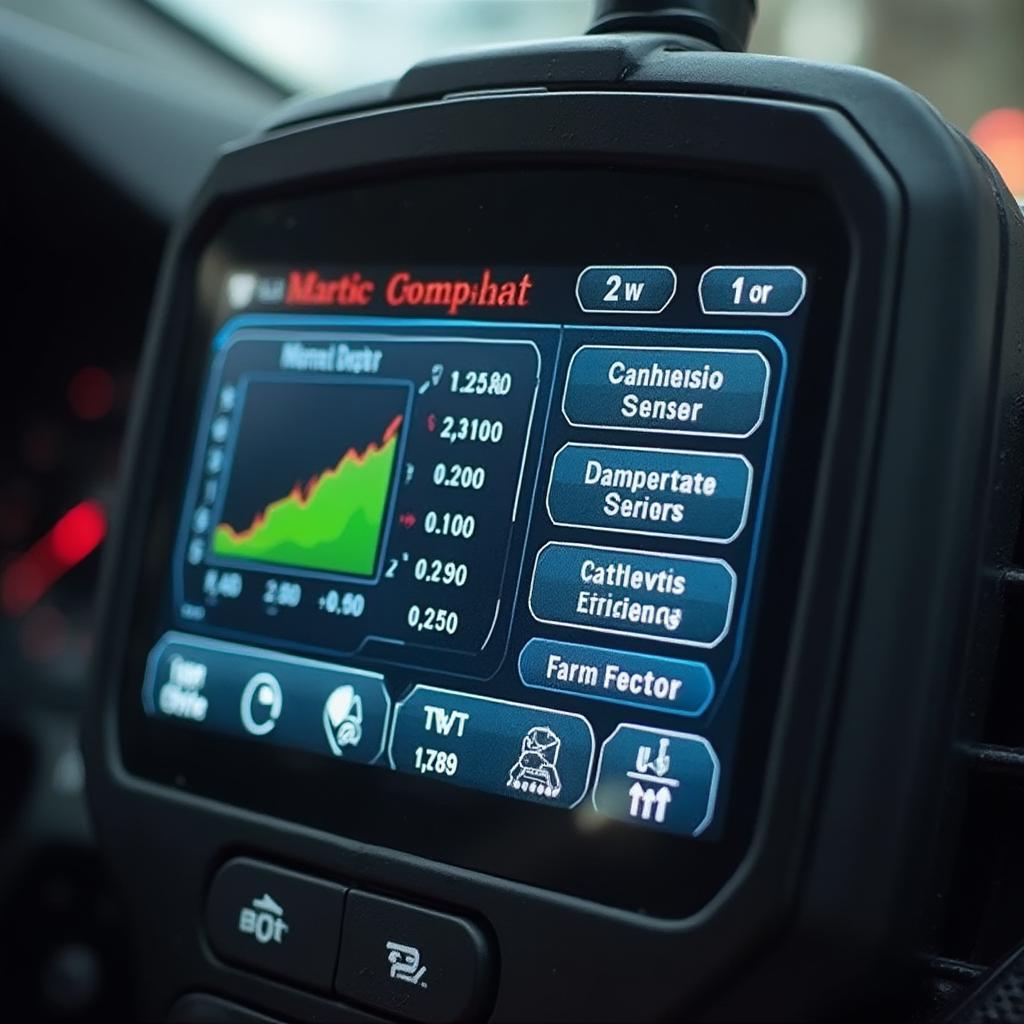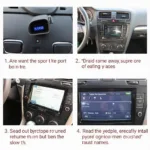OBD2 emissions inspection is a crucial part of vehicle maintenance and registration in many regions. Understanding how it works, what it checks, and how to prepare can save you time, money, and potential headaches. This guide will provide you with everything you need to know about OBD2 emissions inspections.
Understanding the OBD2 Emissions Inspection
The OBD2, or On-Board Diagnostics II, system is a standardized computer system present in most vehicles manufactured after 1996. It constantly monitors various systems in your vehicle, including those related to emissions. During an OBD2 emissions inspection, a technician connects a scanner to your car’s OBD2 port to retrieve data logged by the system. This data is then used to determine if your vehicle meets the required emissions standards. The inspection checks for things like faulty catalytic converters, oxygen sensors, and other components that can contribute to increased emissions. obd2 emissions inepction provides a detailed look at the process.
What the OBD2 System Checks
The OBD2 system monitors a wide range of parameters related to your vehicle’s emissions. These include:
- Catalyst efficiency: Measures how effectively the catalytic converter is reducing harmful pollutants.
- Oxygen sensor performance: Checks if the oxygen sensors are providing accurate readings to the engine control unit.
- Evaporative system integrity: Looks for leaks in the fuel system that can release harmful vapors.
- EGR system functionality: Monitors the Exhaust Gas Recirculation system, which helps reduce nitrogen oxide emissions.
 OBD2 Scanner Checking Emissions
OBD2 Scanner Checking Emissions
Preparing for Your OBD2 Emissions Inspection
Proper preparation can significantly increase your chances of passing the OBD2 emissions inspection. Here are some tips:
- Regular Maintenance: Ensure your vehicle receives regular maintenance, including oil changes, spark plug replacements, and air filter cleaning.
- Check Engine Light: If your check engine light is on, address the underlying issue immediately. This light often indicates a problem that could cause you to fail the emissions inspection. obd2 inspection ny might offer specific advice for drivers in that area.
- Drive Regularly: Driving your car regularly, especially at highway speeds, can help clear out the system and ensure accurate readings.
- Fuel Quality: Using quality fuel can contribute to better emissions performance.
“Regular maintenance is the key to passing your emissions inspection,” says automotive expert John Smith, ASE Certified Master Technician. “Addressing issues promptly, particularly those indicated by the check engine light, can save you a lot of trouble in the long run.”
Common Reasons for OBD2 Emissions Inspection Failure
Several factors can contribute to failing an OBD2 emissions inspection:
- Faulty catalytic converter: A damaged or malfunctioning catalytic converter is a common reason for failure.
- Malfunctioning oxygen sensors: Inaccurate readings from oxygen sensors can lead to incorrect fuel mixtures and increased emissions.
- Evaporative system leaks: Leaks in the fuel system can release harmful vapors, causing an inspection failure.
- Loose or damaged gas cap: A loose or damaged gas cap can also contribute to evaporative emissions issues. car vgate vs890 obd2 could be helpful in identifying such issues.
Conclusion
OBD2 emissions inspection is a vital aspect of vehicle ownership in many areas. Understanding the process and preparing your vehicle adequately can ensure you pass without any issues. By following the tips outlined in this guide, you can contribute to cleaner air and comply with emissions regulations. obd2 egr not ready hyundai is a great resource if you’re dealing with specific EGR issues. Remembering regular maintenance and addressing any check engine light issues are crucial for a successful OBD2 emissions inspection. does a 1995 bmw 325i have obd2 can help owners of older vehicles determine their OBD2 compatibility.
FAQ
- What is an OBD2 emissions inspection?
- Why is it important?
- How can I prepare for the inspection?
- What are common reasons for failing the inspection?
- What should I do if I fail the inspection?
- How often do I need to get an OBD2 emissions inspection?
- Where can I get my car inspected?
Need Help? Contact us via WhatsApp: +1(641)206-8880, Email: [email protected] or visit us at 789 Elm Street, San Francisco, CA 94102, USA. Our 24/7 customer support team is ready to assist you.
